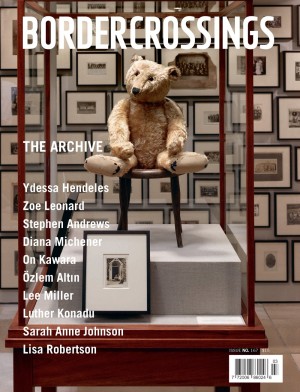Gabor Szilasi
“I like people,” Gabor Szilasi wrote in 1974. “I’m interested in their trade, their ways of life, their environment, their joys and their problems.” This simple declaration sums up the base of the artist’s long practice of photography. Not that the work is simple, any more than ordinary lives are. Szilasi’s photos are, foremost, of people and the things and built environment with which they interact, and they show the complex ways those interactions shape our identities. What shines through in every picture in the retrospective exhibition “Gabor Szilasi: The Eloquence of the Everyday” is the artist’s affection and respect for people’s common activities and surroundings.
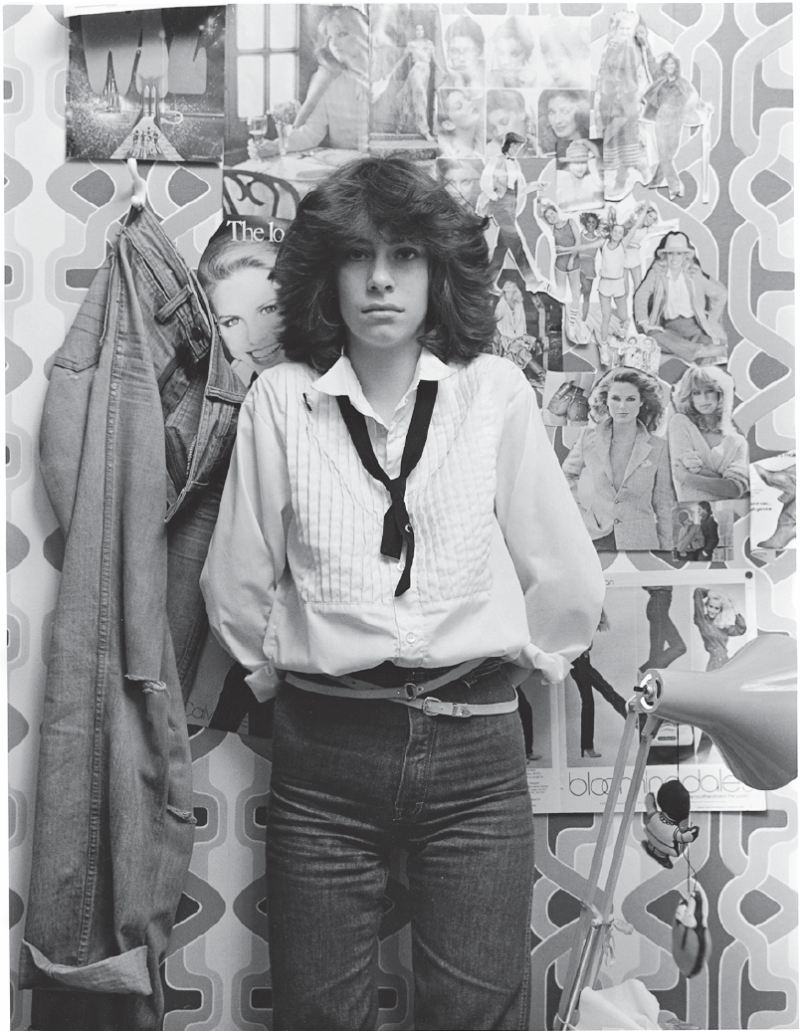
Gabor Szilasi, Andrea Szilasi in her bedroom, Westmount, January 1979; printed 1996, gelatin silver print forming half of a diptych mounted on cardboard. Courtesy the Mira Godard Study Centre, School of Image Arts, Ryerson University, Toronto. Donation of the artist.
Szilasi fled the Communist regime of Hungary in 1957 and came to Canada as a refugee. A self-taught photographer now in his eighties, he has created large, influential bodies of documentary work. The exhibition provides generous samples of photos shot in Hungary, in rural Quebec and in Montreal. Only a fraction of Szilasi’s oeuvre, it is nonetheless a fitting tribute to this important Canadian artist. Curator David Harris’s catalogue, with its careful research into the life and work of the artist, will go a long way to the further study and preservation of this work.
Szilasi’s consistent realism is akin to that of a photojournalist but is focused on ordinary situations and places that escape the headline news. He uses his analogue cameras—a 35 mm for quick shots and large-format cameras for more considered photo sessions—in a straight recording fashion, usually without cropping and without rearranging the scene before his lens. Most photographs are in black and white, but colour shows in interiors and other places where, as he has said, “one has no idea what the colours might be.” With its focus on the quotidian, his work forms not only a witness account that is of historical value but also recognizes shared cultural experiences and human conditions.
A 1979 photograph of his daughter illustrates this point well. We see the girl, Andrea, pressed against a wall in her bedroom wall that is covered with pictures of stars sporting the voluminous hairdos of the time. Peeking out from under her own big, but meticulously brushed hair, the teenager throws her pesky photographer father a slightly resentful look. Women from other generations may find the wallpaper and fashions in this picture somewhat preposterous, but most will identify with the girl’s struggle to create her own identity under the combined pressures of popular culture and domestic demands. The photo is more than a record of time past: Szilasi records points in time that spark a cross-cultural sense of recognition.
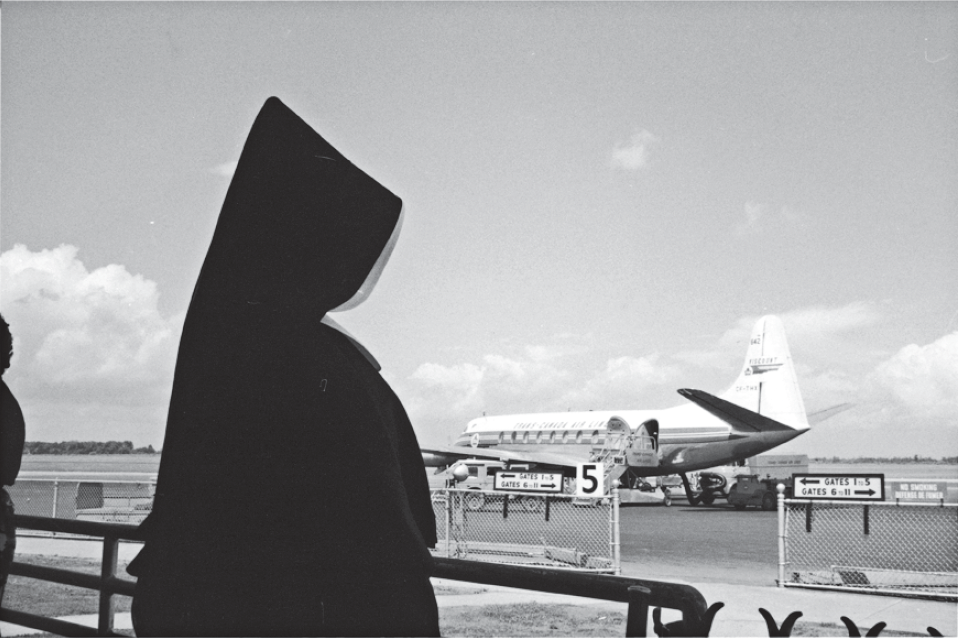
Gabor Szilasi, Nun at Dorval Airport, Montreal, August 1959; printed 1990s, gelatin silver print. Courtesy the Canadian Museum of Contemporary Photography, Ottawa. Donation of the artist.
In a number of portraits Szilasi zeroes in on a single face, but he has become better known for his environmental portraits in which the setting of home or workplace reflects the personality of the sitter. Other photos show streetscapes and buildings of Montreal, where shop windows, advertisements and cars form traces of human activities and desires. Some of his most famous photographs are those of the interior spaces of Louis-Philippe Yergeau’s house in Temiscamingue, 1977 and 1979. His bedroom walls and ceiling are covered with pin-ups of naked men and women, religious imagery and Shirley Temple pictures, while every surface in the dining room is crusted with objects and wildly patterned fabrics. Whether baroque like Yergeau’s, or austere like the stark kitchen of André and Marie-Rose Houde in Lotbinière, 1979), interior decorations are like the lining of nests, and by the nest we know the bird.
Through Szilasi’s sympathetic eye we witness a time of flux in the Quebec of the 1970s and ’80s when major cultural and economic changes began to affect the province’s sense of identity. A young couple, dressed in the latest fashion of 1973, poses self-confidently in front of their brand-new Mustang, exuding pride of ownership and youthful self-confidence. The setting of the American car in the sparse landscape of a new housing development betrays little of the Quebec heritage of their small town of Saint-Joseph-de-Beauce. Buoyed by the excitement of new possessions, these two have put provincialism behind them. Other photos show an intermingling of traditional values, religious devotion and modern life: a crucifix on prominent display above the television set in one, a photo of a black-hooded nun at Dorval airport in another.
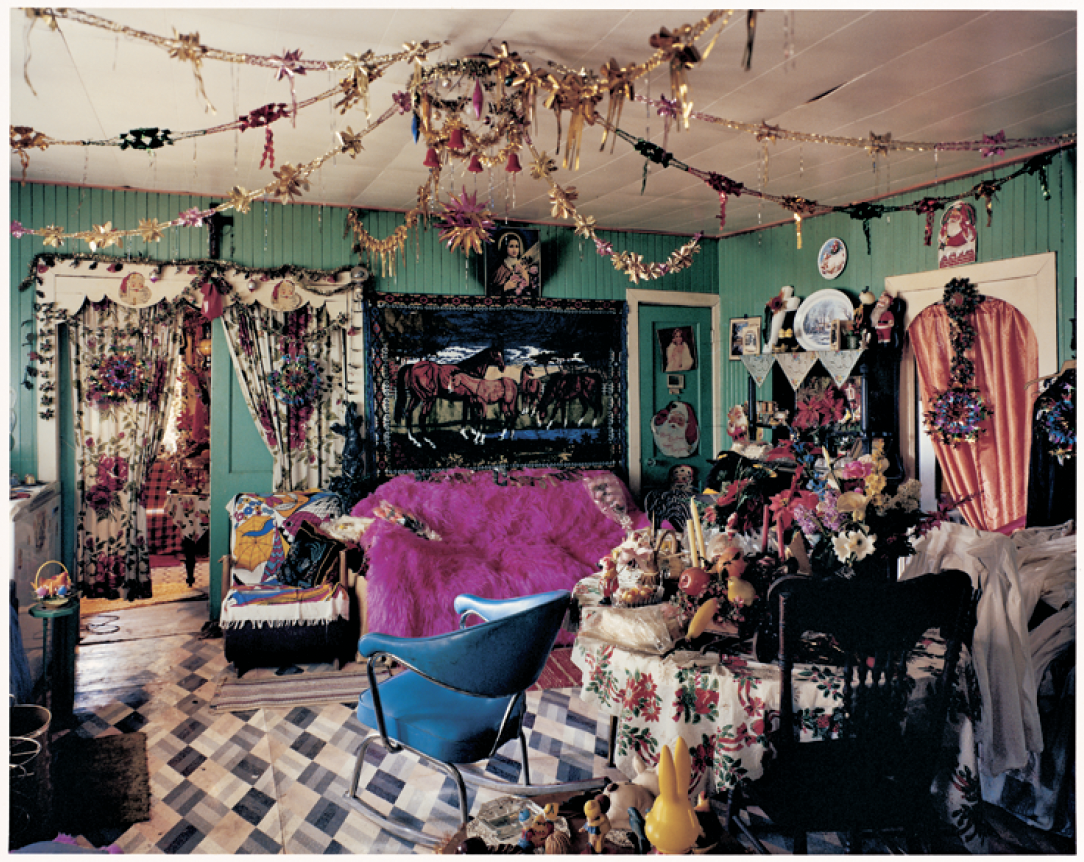
Gabor Szilasi, Louis-Philippe Yergeau’s dining room, Rollet, Témiscamingue, July 1977; printed 2008, chromogenic colour print. Collection of the artist.
After touring the province throughout the 1970s, working on self-initiated projects, Szilasi accepted a teaching position at Concordia University and taught there until 1995. He continued to photograph cityscapes of Montreal, a project he had started in the 1970s. An extensive series of photos of St. Catherine Street, with its storefronts, signs and shoppers, show people interacting with their city, a city captured with the same clarity, precision and unsentimental sympathy as the portraits are.
Szilasi continues to photograph friends, fellow artists and family members, occasionally returning to Hungary. People remain at the core of his practice; he is working on a series of Montreal poets while an exhibition of family photographs, which includes photos of his recently born grandson, is touring the island of Montreal. This exhibition “Famille: Photos de Gabor Szilasi,” organized by the McClure Gallery, shows a full story of family life, from the time his wife, Doreen Lindsay, was pregnant with Andrea, till the birth of his grandson.
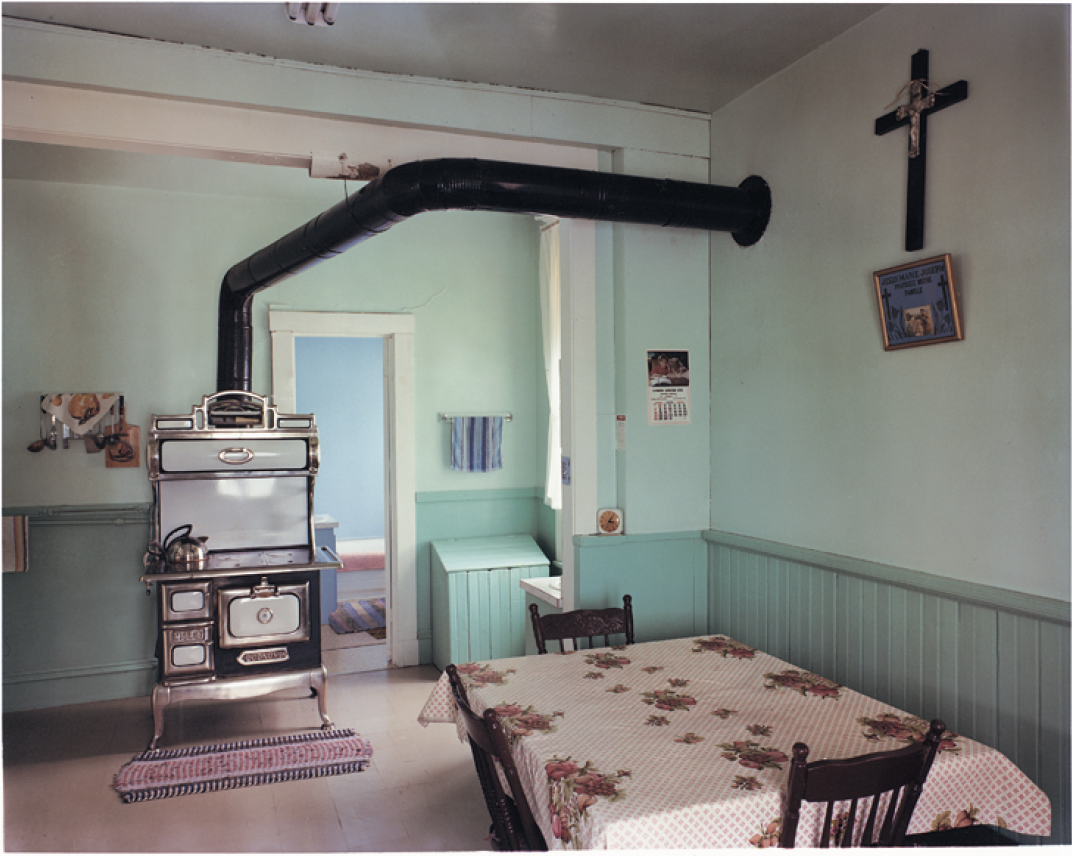
Gabor Szilasi, André and Marie-Rose Houde’s kitchen, Lotbinière, January 1979; printed 2002, chromogenic colour print. Courtesy the Mira Godard Study Centre, School of Image Arts, Ryerson University, Toronto. Donation of the artist.
Szilasi’s dignified portraits attest to a photographic practice that makes sitters feel at ease, trusting that the photographer will keep a respectful distance. It may be true that Szilasi, coming from abroad, sees things differently from a photographer born here, as the artist himself suspects. But if Szilasi ever had been a stranger in Quebec, his images show that a photographer as interested in people as he obviously is could not remain an outsider for very long. Instead he is welcomed and feels at home wherever he finds fellow human beings. ❚
“Gabor Szilasi: The Eloquence of the Everyday” was exhibited at the Musée d’art de Joliette in Joliette, Quebec, from May 24 to August 30, 2009, and exhibited at the Canadian Museum of Contemporary Photography in Ottawa from October 9, 2009, to January 17, 2010. The exhibition will travel to the McCord Museum in Montreal and the Kelowna Art Gallery in Kelowna in 2011. “Famille: Photos de Gabor Szilasi” was exhibited at the McClure Gallery in Montreal from October 10 to November 1, 2008, and will travel to venues on the island of Montreal in 2009 and 2010.
Petra Halkes is a painter, art writer and curator living in Ottawa.

